|
American fashion plates? Unthinkable.
Many American living historians look to fashion plates to help interpret the clothing of the 19th century, but before the late 1820s and early 1830s only European fashion plates existed. Although Americans did closely follow European styles, there is an entire ocean between the United States and Europe and a unique American identity. The Ladies’ Magazine and Literary Gazette and The Lady’s Book introduced American fashion engravings to their publications in the early 1830s. Many people do not realize that the two were separate publications before Louis Godey purchased The Ladies’ Magazine. The combination of the two magazines would later become Godey’s Lady’s Book, the most widely read ladies’ publication in the 19th century. The early fashion plates in both magazines were not numerous, often poor quality, and lacking descriptions, but they are American. Our new fashion plate book for 1830-34 is now available for digital download.
2 Comments
Many living historians talk about women dressing their age. Others insist society pressured women to dress to the norm. Others feel women purchased the fashions they could afford. There were probably all three types of women just as there are today. I do not find a lot of older women in outdated styles in photographic evidence. This older lady definitely fell in the last category. She is dressed to the nines including her bonnet. This extremely fashionable style of bonnet peaked in the fashion plates in the first half of 1864. Towering above the forehead and narrow at the cheek, this particular high brim bonnet ushered in the end of the popular spoon shaped style. By the second half of 1864 and the first half of 1865, the fashion plates began to show more conservative styles sitting closer to the head.
Vintage flowers don't go bad, but there is a limited supply. We do what we can to continue to bring you what we can find. Sales have been slow with most events cancelled, but we are still plugging along and building up inventory of these hard to find gems. If you like yellow or orange, you are really in luck. A lot of these flowers come in limited color choices, but I can always find yellow and orange. My favorites are usually from the German Democratic Republic or Czechoslovakia. Both of these countries haven't been around since the early 1990s. The 1990s don't seem like a long time ago to me. I graduated from high school then. Alas, I am vintage and so are these flowers.
A conveniently placed mirror in this fashion plate gives us a front an back view of this popular style of headpiece seen in the late 1830s and early 1840s. Engravers often used this technique to allow viewers to see different angles of a garment. The headpiece in question appears like a bun shaper that has been cut to lay straight, and placed oddly on the top of the head. I have always found this style odd, but they pop up in many fashion plates. The idea of it being velvet increases its appeal and the cap at the back to cover a small chignon makes it a useful addition to a fancy early Victorian impression. The Court Magazine & Monthly Critic and Lady’s Magazine, a Museum of the Belles Lettres, Music, Fine Arts, Drama, Fashions, &c.
January 1839 Description of the Fashion Plates in the Present Number. [Having found that many of our Subscribers have been desirous of having a greater Number and greater Variety of Fashion Plates than we can possibly give in this Work, we beg to inform our Readers generally, that there are eighty-four Plates and upwards of the same description published by us annually in Paris (from which, monthly, we select two of the most novel and seasonable for the use of the Court Magazine), and that the same can be obtained from Mr. Dobbs, our publisher, at No. 11. Carey Street, or by the Order of any Bookseller in England, Scotland, or Ireland, viz., for three months, 12s.; for a year, ?2, in advance, as customary in France. No. 2. – Dinner and Evening Dresses. – First figure. Dress of organdi (book muslin), embroidered in coloured worsteds; corsage en pointé and a la Sevigné with folded draperies across the bosom; the sleeves excessively short and full, but without trimming (see plate). Hair turned back entirely off the brow in the Chinese fashion, the back dressed low, in a rouleau with one small bow of hair in the centre (see plate); the wreath of roses is put on a la vestale. Long gold earrings; white kid gloves ornamented at the tops with a puffing of gauze. A bow of pink satin ribbon with long ends is placed at the point of the corsage. White silk stockings; black satin shoes. Second figure. – Dress of striped gauze, with a very deep flounce at bottom. Châle manteau or mantelet, of black satin; this shawl is rounded at back in the style of the mantelet Châles we have so frequently described; the front ends are long and finished by thick tassels. This shawl has likewise the useful accessory of a large hood, which can be drawn over the head at pleasure. It is lined with white silk and wadded. Coiffure a la Berthe. This is the most fashionable style of coiffure at present adopted in Paris. The one on the figure on our plate, is composed of black velvet, and consists merely of a narrow head-piece, deep enough to admit of its turning up in a roll in front (see plate); a deep fall of black lace is put on at the edge (bord) and hangs low at the sides, forming a kind of oreillettes. A bouquet of flowers is placed at each side. Three gold-headed pins are stuck into the roll at the left side (see plate); the front hair is in braids en fer à cheval, the back in a single braid en rouleau. Half long black silk mittens; bracelets, worn high up on the arm. Antique fan; white satin shoes. As a student of 19th century millinery, I do my best to make historical reproductions. When a customer purchases a Timely Tresses bonnet, they don't have to question the research. They know that it is true to the shapes and techniques of the desired era of interpretation. There are many milliners who don't mind hot gluing the flowers to their bonnets, cutting up straw hats from a thrift store, or trimming imported straw blanks that are just not the right shape, but I am just not one of them. I don't wish to put those milliners down. I am glad they have success in business. It is just not the right path for me. I have had to get over some things. Many period materials, like willow, are just no longer available. I carry the best the supplies commercially available, many of them vintage, to encourage folks to make more authentic bonnets. Constant examination and collection of extant bonnets, antique photographs, and fashion plates improves my product with little details like crossbands to take bonnets one step closer to the real deal. Authenticity brings me joy and that is what I choose for my business.
When I look at wet plate photographs, the first thing I notice is the bonnet. Shocker right? Sometimes, that means I end up with pictures where, let us say, the bonnet outshines the wearer. In this mid to late 1850s 9th plate ruby Ambrotype, the young woman's beauty definitely does justice to her bonnet. Most of my photographs show solid colored backgrounds, but some feature decorative backdrops. I especially love the little sailboat on the lake. Just today, I noticed that there appears to be a little flag on top of the mountain. Decorative backgrounds can help identify the photograph and give further information about the photograph like location and specific dates. Unfortunately, I haven't been so lucky with mine, so I guess I better get back to research!
When ever a new costume drama comes out, my friends and family call or text to see what I thought of the costuming. For the most part, I either have too much to say and the questioner glazes over or I just say it is a theatrical interpretation and move on to something else. A issue for me with costuming in film is that I inevitably have a customer who wants to look just like that character. Part of our mission at Timely Tresses is historical accuracy. How can I in good conscience dress a customer in a bonnet that is 20 years out of date to the impression or that is just a fanciful creation of a costume designer? Even when movies get the dresses right, the bonnets are usually terrible. I have started many times to review the millinery in a movie or series and ended up with a passage far too long to post. I have decided addressing one bonnet at a time is a far more manageable task.
When I think of bonnets in the movies that really impress me, this bonnet from the 2011 adaptation of Jane Eyre always comes to mind. The shape is appropriate to the late 1830s and early 1840s. The brim flares neatly around the wearer's face. The curtain is an appropriate length. The crown goes strait back rather than earlier raised crowns. The tip (the tiny circle at the back of the crown) is sort of weird. Unlike the rounded blocked tip of most 19th century bonnets, It is super flat and the one thing that is strange about this bonnet. The rest of the bonnet is so phenomenal that I choose to ignore the tip. Finally, the straw . . . . . the straw is just amazing. I can't say enough about the straw. I don't know who they found to do this straw work, but it rings true to the 19th century. Popular throughout the 19th century, fancy straws were a lighter than air option for summer. Usually the decorative work was produced in strips and then sewn together either to other strips or to straw braid. I purchased straw thread and a straw splitter years ago in the hopes of making a fancy straw. I realized after starting, the bonnet would end up being a ultra time intensive labor of love that I would be afraid to wear for fear of damaging it. For the Jane Eyre bonnet, my fear is that they took the straw off of an original bonnet. My hope is they paid someone an exorbitant amount of money to make this masterpiece. One day, I hope to finish my fancy straw bonnet. Until then, I will enjoy looking at this one. Today when we want to see an image again we simply screenshot it on our phone or computer. It was not quite so easy in the 19th century. This ferrotype (tintype) is reproduction of an earlier image probably dating to the early 1850s judging by her clothing. The edge of the original image is visible and indicated by the black line around the outside. When I purchased this image off of eBay, I was hoping it was a daguerreotype mislabeled as a tintype, but I wasn't quite so lucky. Nonetheless, she is pretty interesting. Wet plate photography captured a phenomenal level of detail. Even though this is a copy, you can see the canes in her bonnet, the wrinkles in her hands, the print of her dress, and so much more.
This woman apparently was so frustrated with her bonnet falling off of the back of her head that she pulled her crossband down over her forehead. Crossbands often appear in extant bonnets and were used to secure the bonnet to prevent slipping off the back of the head. They aren't usually visible in photographs or mentioned in the magazines. Without combining different sources for research, I might of thought that this older woman was just wearing a really groovy headband. Unfortunately, this image doesn't have any back marks, so finding further information about her is difficult. She is a treasured member of my collection and always makes me giggle.
|
AuthorUsually Dannielle, sometimes Mandy Archives
January 2021
Categories |
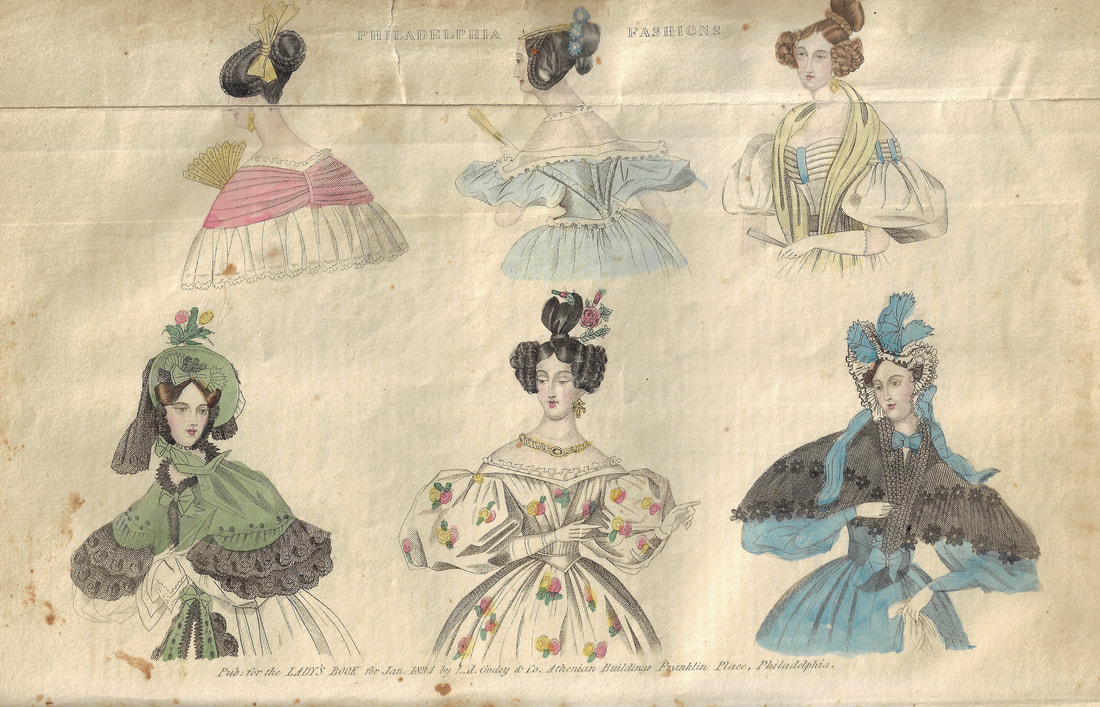
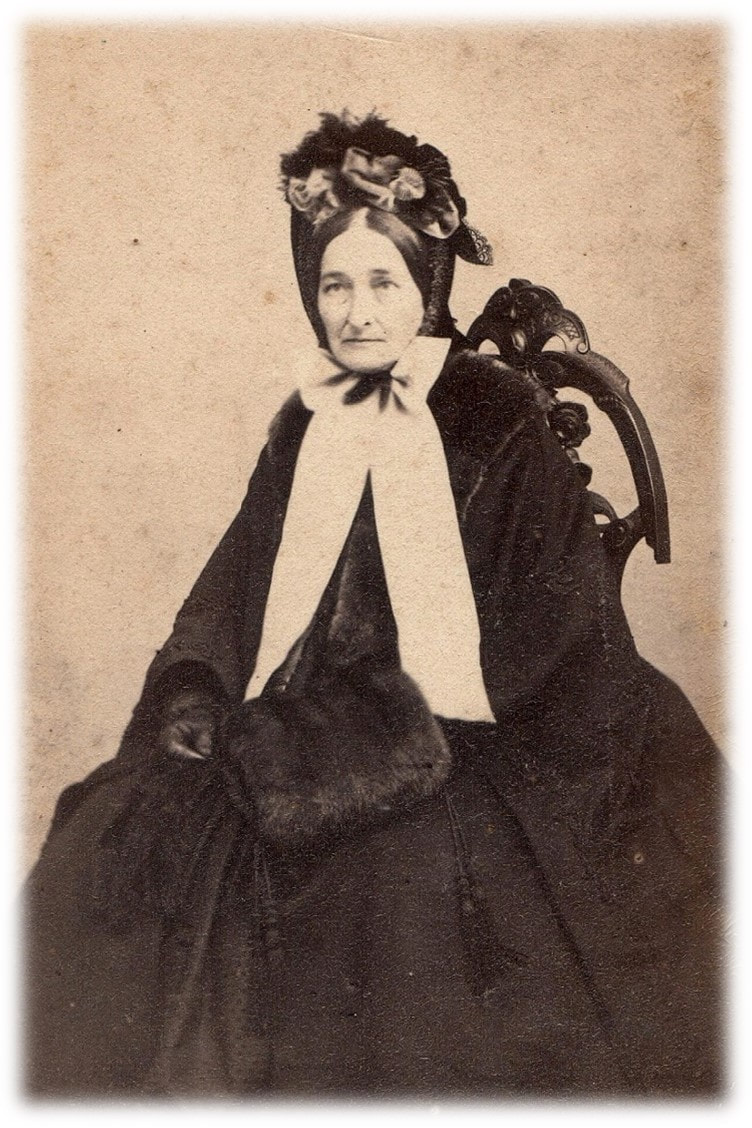
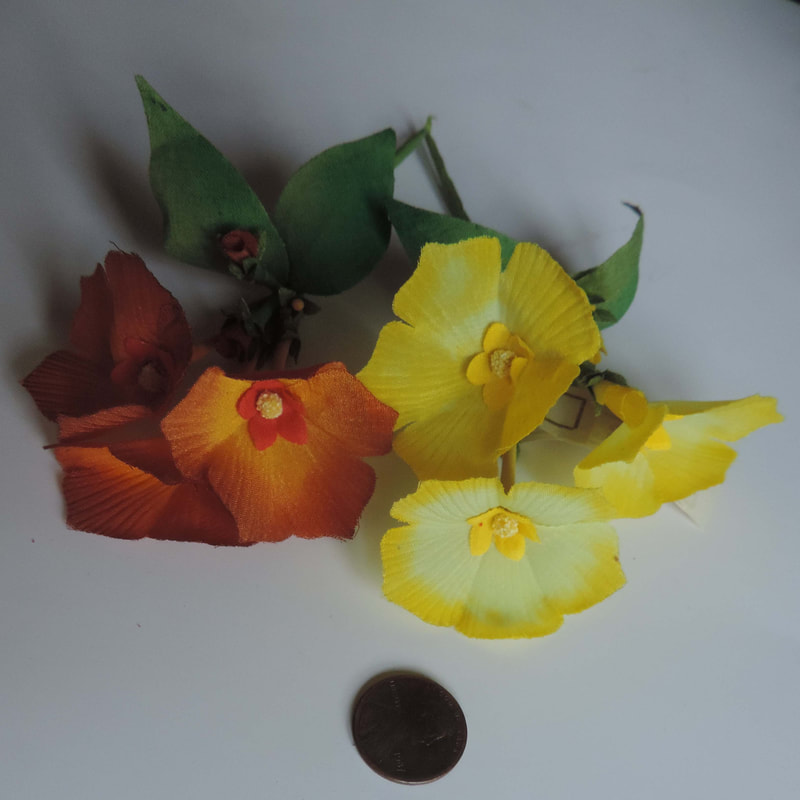
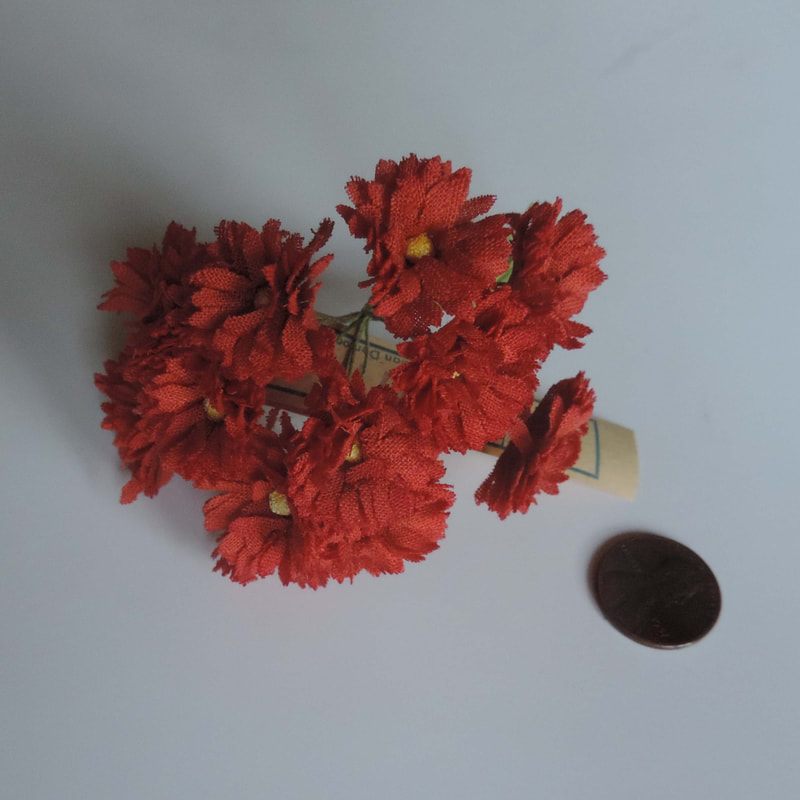
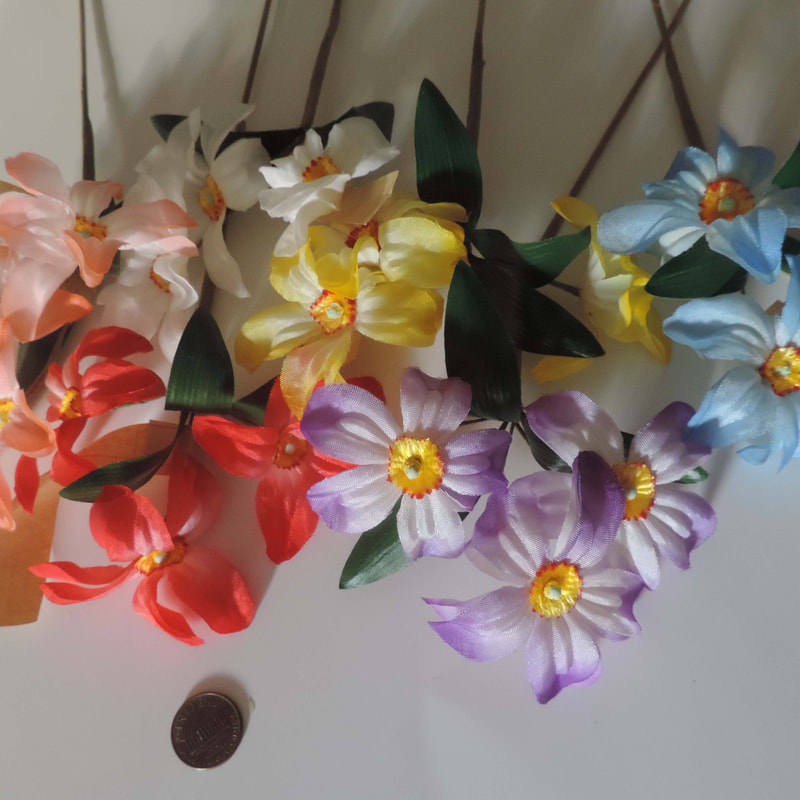
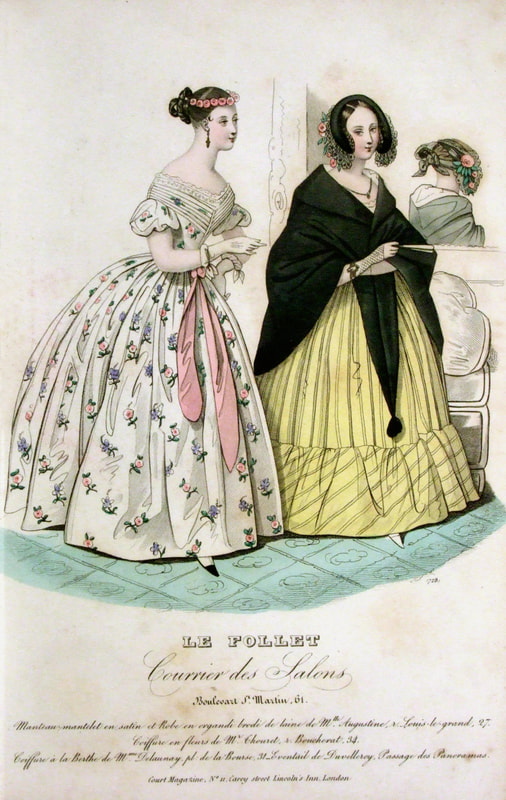
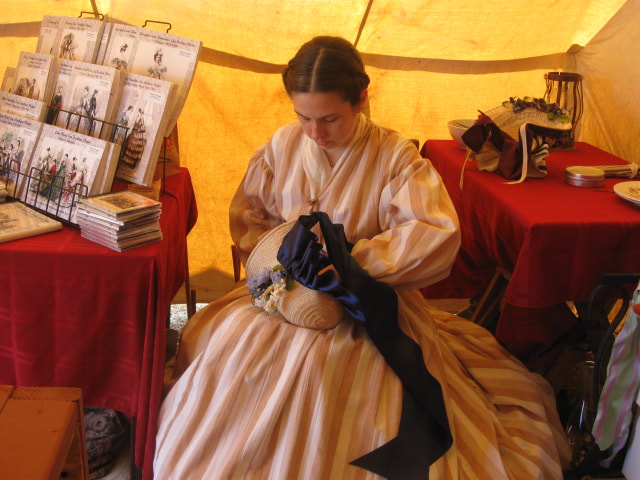
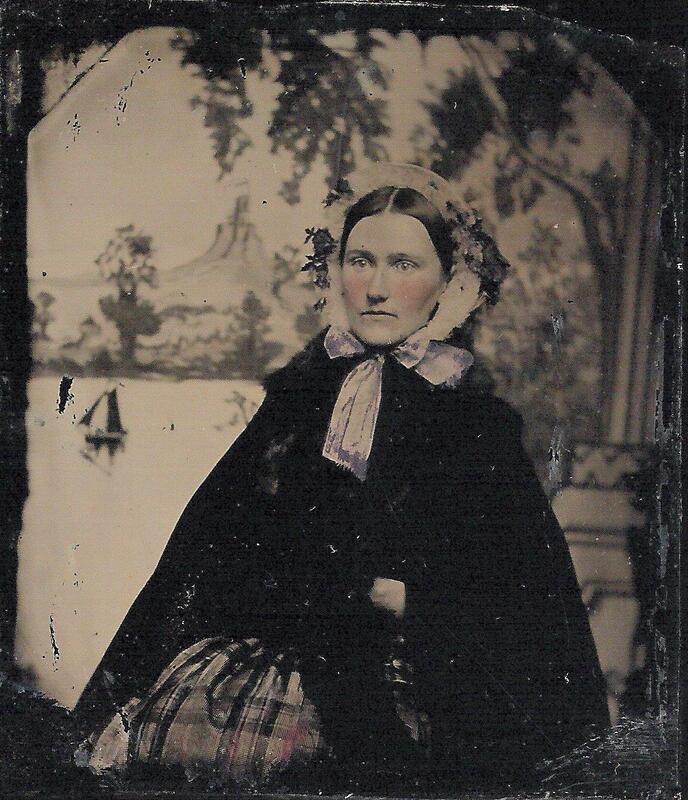
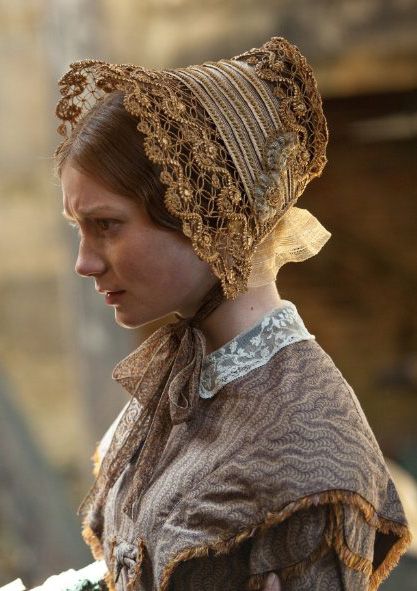
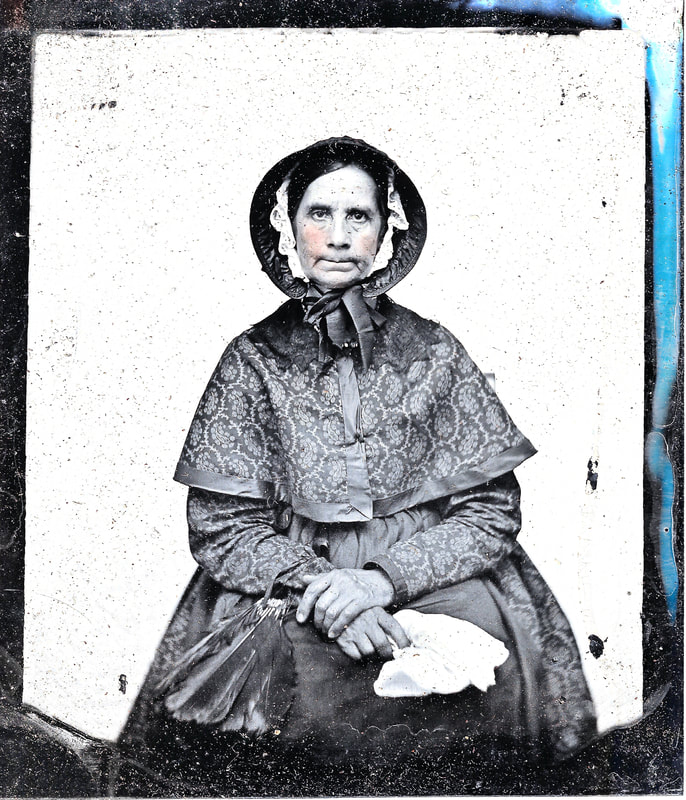
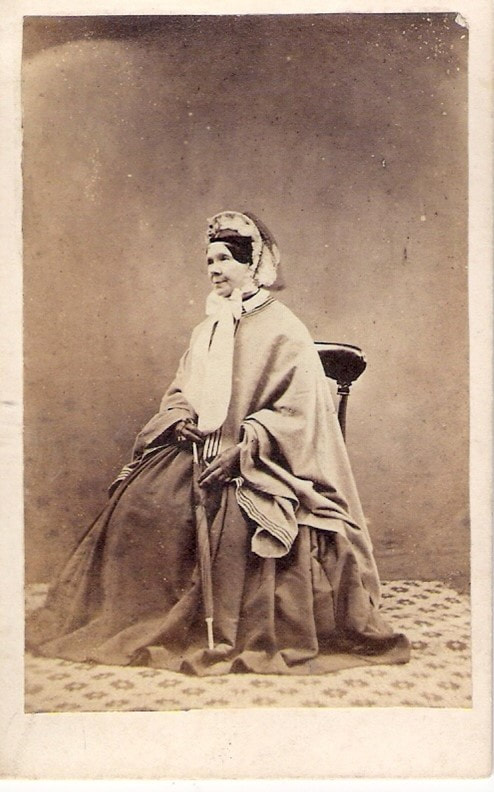
 RSS Feed
RSS Feed